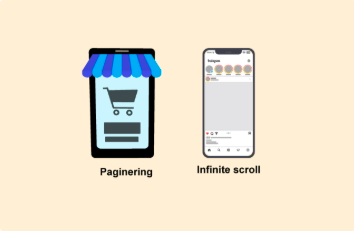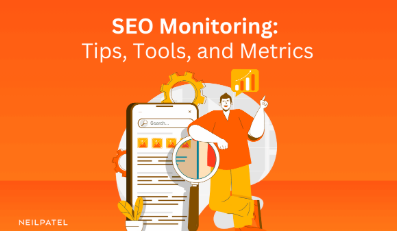The internet has gone mobile. More than 60% of searches now come from smartphones, and Google has responded with mobile-first indexing — meaning it primarily uses the mobile version of a site to determine ranking and indexing.
For businesses, this shift makes mobile optimization non-negotiable. To succeed, you need the right mobile-first indexing tools to analyze, monitor, and improve your mobile SEO performance. In this guide, we’ll explore what mobile-first indexing is, why it matters, and which tools can help you stay ahead.
What is Mobile-First Indexing?
Mobile-first indexing means that Google crawls and indexes the mobile version of your website before the desktop version. If your mobile site is poorly optimized, missing content, or slower than your desktop version, your rankings could suffer.
Key points about mobile-first indexing:
- It applies to all websites (since 2021).
- Googlebot primarily crawls using a mobile user agent.
- Your mobile and desktop content should be consistent (text, images, metadata).
- Performance factors like Core Web Vitals play a big role in rankings.
Why Mobile-First Indexing Tools are Essential
Traditional SEO audits are no longer enough. Mobile-first indexing tools provide insights into how Googlebot Smartphone and mobile users experience your site. They help with:
- Crawl and Indexing Validation
- Check if mobile content is accessible to crawlers.
- Mobile Usability Checks
- Detect design issues like clickable elements being too close.
- Performance Monitoring
- Measure page speed, Core Web Vitals, and responsiveness.
- Content Parity Analysis
- Ensure your mobile and desktop content match.
- Error Detection
- Find broken mobile links, blocked resources, or hidden scripts.
Top Mobile-First Indexing Tools
Here’s a breakdown of the best tools for mobile-first indexing optimization:
1. Google Search Console (Mobile Usability Report)
- Direct insights from Google on mobile indexing.
- Flags usability errors (e.g., small text, viewport issues).
- Shows crawl status using Googlebot Smartphone.
2. Google Mobile-Friendly Test
- Quick check to see if a page is mobile-friendly.
- Highlights rendering issues and blocked resources.
- Useful for one-off page testing.
3. PageSpeed Insights
- Tests Core Web Vitals (LCP, CLS, INP) for mobile.
- Offers detailed performance suggestions.
- Pulls field data from the Chrome User Experience Report (CrUX).
4. Lighthouse (Chrome DevTools)
- Open-source tool for in-depth mobile performance audits.
- Analyzes accessibility, best practices, and SEO.
- Provides lab data for testing changes before going live.
5. Screaming Frog SEO Spider (Mobile User-Agent Mode)
- Simulate a mobile crawler to see how bots view your site.
- Detect missing content, redirects, and meta issues.
- Integrates with log files for crawl validation.
6. Ahrefs / SEMrush Site Audits
- Mobile-focused SEO audits.
- Track mobile keyword rankings.
- Compare desktop vs. mobile visibility.
7. GTmetrix Mobile Testing
- Performance-focused tool with mobile simulations.
- Tests under different devices and network speeds.
8. WebPageTest Mobile Audit
- Real-device testing for mobile speed and rendering.
- Customizable testing for different geographies.
9. DeepCrawl / Botify / OnCrawl (Enterprise Tools)
- Large-scale mobile crawl simulations.
- Real-time alerts for mobile crawl errors.
- Great for enterprise websites with millions of URLs.
Key Features to Look for in Mobile-First Indexing Tools
When choosing tools, make sure they offer:
- Mobile crawler simulation → How Googlebot Smartphone views your site.
- Core Web Vitals monitoring → Performance signals critical to rankings.
- Responsive design testing → Compatibility across devices.
- Content parity checks → Ensure mobile = desktop.
- Error reporting & alerts → Catch issues before rankings drop.
- Integration with other SEO tools → Combine with analytics and keyword tracking.
How to Optimize with Mobile-First Indexing Tools
Here’s a workflow to implement real results:
Step 1: Crawl Your Site in Mobile Mode
- Use Screaming Frog or Botify to simulate Googlebot Smartphone.
- Check for missing titles, meta tags, or blocked content.
Step 2: Test Mobile Usability
- Use Google Search Console and Mobile-Friendly Test.
- Fix issues like:
- Text too small to read
- Tap targets too close
- No responsive viewport
Step 3: Measure Performance
- Use PageSpeed Insights, Lighthouse, or WebPageTest.
- Optimize for Core Web Vitals:
- LCP < 2.5 seconds
- CLS < 0.1
- INP < 200 ms
Step 4: Check Content Parity
- Compare mobile vs. desktop pages.
- Ensure structured data, alt text, and internal links match.
Step 5: Monitor Continuously
- Set up regular crawls and alerts for mobile performance.
- Track mobile keyword rankings separately from desktop.
Common Issues Detected by Mobile-First Indexing Tools
- Content Missing on Mobile
- Collapsed or hidden sections that aren’t crawlable.
- Blocked Resources
- Robots.txt blocking CSS, JavaScript, or images.
- Slow Mobile Load Times
- Heavy scripts, images, or third-party trackers.
- Unresponsive Design
- Non-adaptive layouts on smaller screens.
- Inconsistent Structured Data
- Markup missing on mobile versions.
The Future of Mobile-First Indexing
As mobile use continues to dominate, mobile-first indexing will expand into new areas:
- 5G + Progressive Web Apps (PWAs) → Faster mobile experiences will influence rankings.
- Voice Search Optimization → Mobile-first indexing aligned with conversational queries.
- Visual Search SEO → Mobile-first tools will integrate image recognition checks.
- AI-Powered Crawling → Smarter crawlers simulating real user behavior.
Best Practices for Mobile-First SEO Success
- Always design for mobile-first, not desktop-first.
- Use responsive design instead of separate m-dot sites.
- Test performance on real devices, not just emulators.
- Ensure all critical content and structured data appear on mobile.
- Continuously monitor with multiple tools for accuracy.
Conclusion
In today’s search environment, mobile-first indexing is the standard, not the exception. If your site isn’t optimized for mobile, your rankings, traffic, and conversions will suffer.
Using the right mobile-first indexing tools is the key to success. From Google’s native tools (Search Console, PageSpeed Insights) to enterprise crawlers (Botify, DeepCrawl), these platforms help you uncover issues, improve performance, and ensure your site is fully ready for mobile-first.



